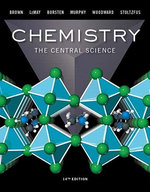?The following diagrams represent aqueous solutions of two monoprotic acids, HA (A = X or Y). The water molecules have been omitted for clarity.
Chapter 16, Problem 16.2(choose chapter or problem)
The following diagrams represent aqueous solutions of two monoprotic acids, HA (A = X or Y). The water molecules have been omitted for clarity.
(a) Which is the stronger acid, HX or HY?
(b) Which is the stronger base, \(\mathrm{X}^{-}\) or \(\mathrm{Y}^{-}\)?
(c) If you mix equal concentrations of HX and NaY, will the equilibrium
\(\mathrm{HX}(a q)+\mathrm{Y}^{-}(a q) \rightleftharpoons \mathrm{HY}(a q)+\mathrm{X}^{-}(a q)\)
lie mostly to the right \(\left(K_{c}>1\right)\) or to the left \(\left(K_{c}<1\right)\)? [Section 16.2]
Text Transcription:
X-
Y-
HX(aq) + Y-(aq) rightleftharpoons HY(aq) + X-(aq)
(Kc > 1)
(Kc < 1)
Unfortunately, we don't have that question answered yet. But you can get it answered in just 5 hours by Logging in or Becoming a subscriber.
Becoming a subscriber
Or look for another answer
